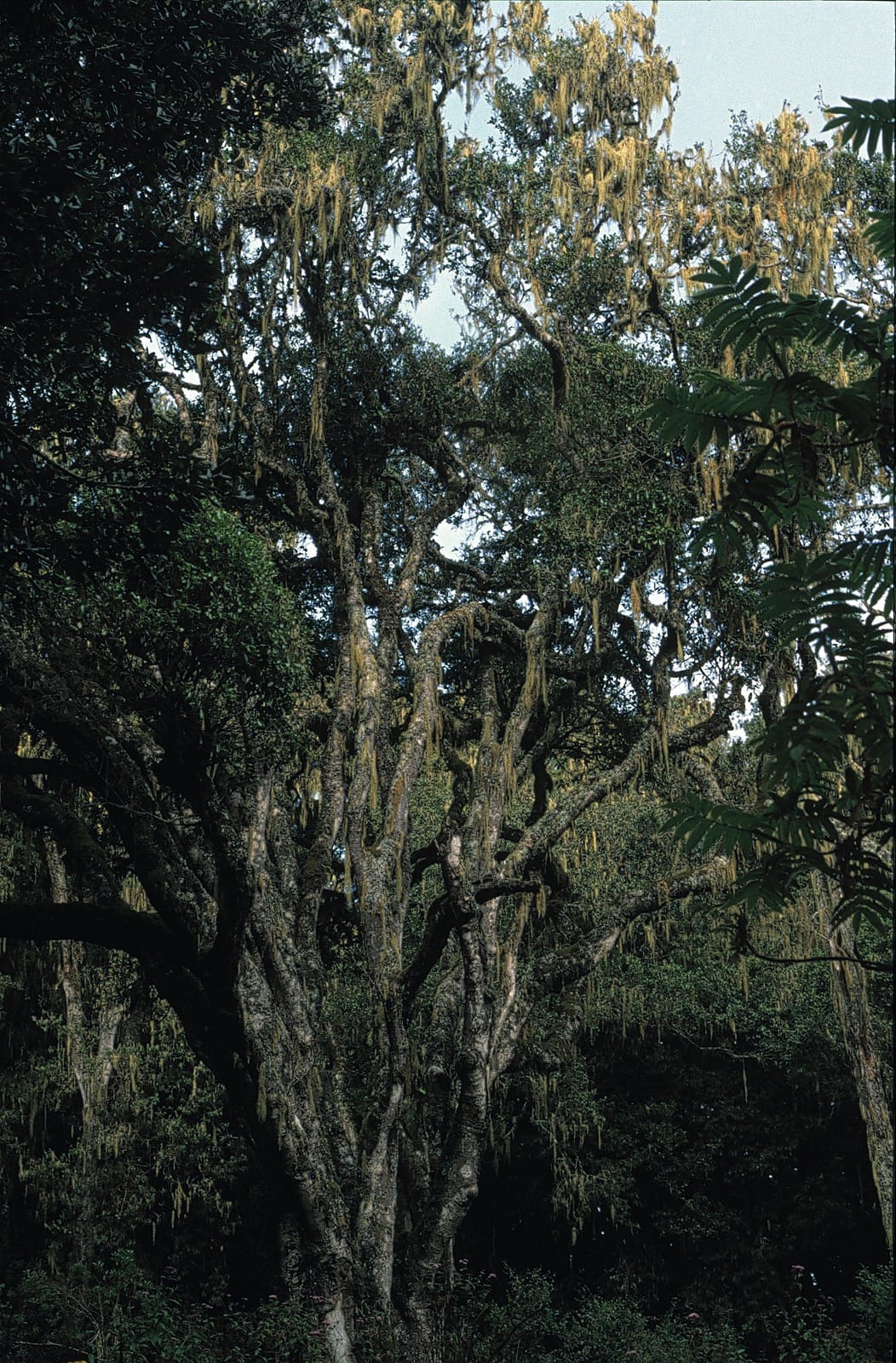Ilex mitis
Credits
Article from New Trees by John Grimshaw & Ross Bayton
Recommended citation
'Ilex mitis' from the website Trees and Shrubs Online (treesandshrubsonline.
Genus
Common Names
- African Holly
- Cape Holly
Other taxa in genus
- Ilex × altaclarensis
- Ilex aquifolium
- Ilex bioritsensis
- Ilex buergeri
- Ilex cassine
- Ilex ciliospinosa
- Ilex corallina
- Ilex cornuta
- Ilex crenata
- Ilex cyrtura
- Ilex decidua
- Ilex dipyrena
- Ilex fargesii
- Ilex forrestii
- Ilex geniculata
- Ilex glabra
- Ilex hayatana
- Ilex hookeri
- Ilex integra
- Ilex intricata
- Ilex kingiana
- Ilex laevigata
- Ilex latifolia
- Ilex linii
- Ilex macrocarpa
- Ilex melanotricha
- Ilex montana
- Ilex nothofagifolia
- Ilex opaca
- Ilex pedunculosa
- Ilex perado
- Ilex pernyi
- Ilex purpurea
- Ilex rotunda
- Ilex rubra
- Ilex rugosa
- Ilex serrata
- Ilex shennongjiaensis
- Ilex spinigera
- Ilex verticillata
- Ilex vomitoria
- Ilex yunnanensis
Shrub or tree to 40 m, dbh 0.3–1 m, rarely to 5.5 m. Branchlets slightly pubescent; mature bark smooth, grey or pinkish red. Leaves evergreen, 2.5–14 × 1.3–4.6(–5.3) cm, shape extremely variable, though basically elliptic, thin and leathery, upper surface glabrous, dark green, midrib depressed, lower surface glabrous, pale green, seven to nine secondary veins on each side of the midrib, margins entire or with spiny teeth near apex, apex acute, apiculate or rounded; petiole 0.5–1 cm long, glabrous. Inflorescences axillary, fasciculate or rarely solitary, each axis with one to four (to five) flowers (female) or one to six (to seven) flowers (male). Flowers white, fragrant, 4–6(–8)-merous. Fruit fleshy, ripening from greenish pink to scarlet, globose, 0.4–0.7 cm diameter, with four to six (to eight) pyrenes. Flowering September to February, fruiting December to June (South Africa). Verdcourt 1968, Andrews 1990, Galle 1997. Distribution ANGOLA; CAMEROON; EQUATORIAL GUINEA: Bioco; ERITREA; ETHIOPIA; KENYA; MADAGASCAR; MALAWI; MOZAMBIQUE; NIGERIA; SIERRA LEONE; SOUTH AFRICA; SUDAN; TANZANIA; UGANDA; ZAMBIA; ZIMBABWE. Habitat Upland rain forest, dry evergreen forest and secondary scrub, typically near streams or rivers. Altitude ranges from between 7 and 600 m asl (at the coast), to between 900 and 3150 m asl (inland). USDA Hardiness Zone 9. Conservation status Not evaluated. Illustration Verdcourt 1968; NT400. Taxonomic note Ilex mitis exhibits considerable morphological variation across its wide range. Numerous segregate species, subspecies and varieties have been described and these are best referred back to I. mitis.
Like Juniperus procera, Ilex mitis is both the largest species of its genus and the only member of it which occurs in sub-Saharan Africa. It grows there in cool Afromontane forest, and can achieve spectacular dimensions and make a fine tree. In the Kilimanjaro forest it is most frequent at about 2500 m and is conspicuous by its pale grey bark. It is an important constituent of the forests of South Africa, and can be easily observed on the slopes of Table Mountain. A number of medicinal properties are attributed to it in southern Africa, one of the more noteworthy practices being the Zulu custom of bathing influenza-sufferers in a lather made of the leaves rubbed in water (Coates Palgrave 1990). Its origins in essentially frost-free conditions have not encouraged many to grow it, although optimistic travellers have occasionally brought home seed from the Cape, as Sir Harold Hillier did in 1973 (A. Coombes, pers. comm. 2008). There are a couple of notable exceptions. Susyn Andrews has a 2.5 m specimen in her garden at Kew, originally a potted plant moved indoors for the winter, but now too large for this and thus left outside in its pot – with no damage so far after several years. This specimen is a male, and flowers each year. Another is in the former African Garden of David and Colleen Fenwick in Plymouth, Devon, grown originally at K. Sahin Zaden B.V. in the Netherlands, from South African seed, and passed by me (JMG) to the Fenwicks. Although pruned to keep it within bounds in this small garden it has made an attractive specimen, with a conspicuous pale stem and a neat crown of dark green leaves. A young tree at Arboretum Bokrijk has survived two mild winters and is growing fast, but has yet to be properly tested (J. Van Meulder, pers. comm. 2007). On this evidence it would seem that I. mitis is worth attempting in the milder parts of the United Kingdom and western Europe, and it would certainly be successful in coastal California.

